Ditapis dengan
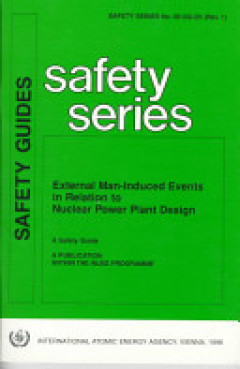
External Man-Induced Event in Relation to Nuclear Power Plants Design, Safety…
This guide advises on the protection of nuclear power plants against the effects of external man-induced events which originate outside the site and which have been identified and selected as design basis external man-induced events (DBEMIEs) according to Safety Guide No. 50-SG-S5, to which this guide is complementary.
- Edisi
- -
- ISBN/ISSN
- 9201238800
- Deskripsi Fisik
- 43 p. : Illus. ; 24 cm
- Judul Seri
- Safety Series No. 50-SG-D5
- No. Panggil
- -

Safety Standard Radiation Protection of Workers in the Mining and Milling of …
-
- Edisi
- -
- ISBN/ISSN
- -
- Deskripsi Fisik
- -
- Judul Seri
- Safety Series No. 26
- No. Panggil
- -
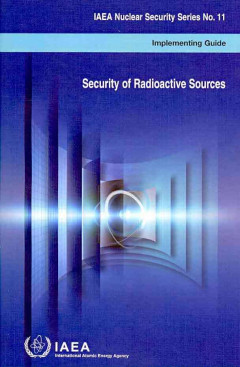
Security of Radioactive Sources
There are concerns that terrorist or criminal groups could gain access to high activity radioactive sources and use these sources maliciously. The IAEA is working with Member States to increase control, accounting and security of radioactive sources to prevent their malicious use and the associated potential consequences. Based on extensive input from technical and legal experts, this implement…
- Edisi
- -
- ISBN/ISSN
- 9789201026095 / 18159317
- Deskripsi Fisik
- 66 p. : illus. ; 24 cm
- Judul Seri
- Nuclear Security Series No. 11 (Implementing Guide)
- No. Panggil
- -

Technical Reports Series No. 287: Treatment of Alpha Bearing Wastes
This book consist: Introduction; Sources, Types, and volumes of alpha bearing wastes; Waste management strategies; Treatment of solid alpha bearing wastes; Treatment of liquid alpha bearing wastes; Alpha bearing waste treatment facilities; and Conclusions and recommendations. (Jml)
- Edisi
- -
- ISBN/ISSN
- 92-0-125388-5 / 0074-1914
- Deskripsi Fisik
- 69 p. : Illus. ; 24 cm
- Judul Seri
- Technical Reports Series
- No. Panggil
- 621.48 IAE t
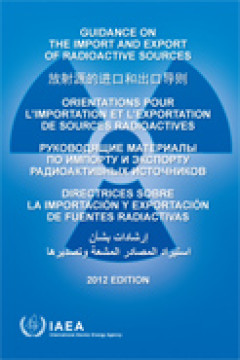
Guidance on the Import and Export of Radioactive Sources, 2012 Edition
During meetings on the development and approval of the non-legally binding Code of Conduct on the Safety and Security of Radioactive Sources (hereinafter referred to as the Code), some Member States requested guidance on implementing the Code, particularly in relation to the import and export of radioactive sources. Therefore, this non-legally binding Guidance was developed in 2004 by Member St…
- Edisi
- -
- ISBN/ISSN
- -
- Deskripsi Fisik
- 19 p. : Illus. ; 24 cm
- Judul Seri
- -
- No. Panggil
- -
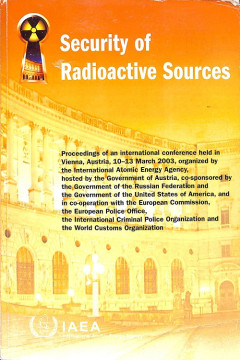
Security of Radioactive Sources: Proceedings of an International Conference H…
Accidents involving radioactive sources and reports of illicit trafficking in radioactive materials have raised awareness of the safety and security risks created by sources that are outside effective control, and the attacks of 11 September 2001 have triggered international concern about the potential malevolent use of radioactive sources by terrorist groups. The International Conference on Se…
- Edisi
- -
- ISBN/ISSN
- 9201074034 / 00741884
- Deskripsi Fisik
- 617 p. : Illus. ; 24 cm
- Judul Seri
- Proceedings Series
- No. Panggil
- 363.17996 IAE S
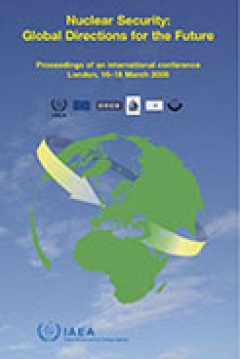
Proceedings Series - Nuclear Security: Global Directions for the Future
The principal aim of the International Conference on Nuclear Security: Global Directions for the Future was to share information on how to most successfully combat sub-State and criminal threats now and in the future, and to foster a better understanding and awareness of the global changes since 11 September 2001. The conference considered the threat of malicious acts involving nuclear and othe…
- Edisi
- -
- ISBN/ISSN
- 92-0-105905-1 / 0074-1884
- Deskripsi Fisik
- 326 p.
- Judul Seri
- -
- No. Panggil
- R539.2 NUC
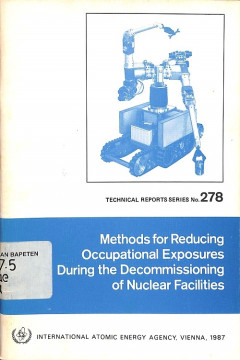
Methods for Reducing Occupational Exposures During the Decommissioning of Nuc…
This book consist : Introduction; Scope; Basic considerations; Methods for reducing occupational exposures; Health physics progamme; Optimization of exposure reduction techniques; Effects on waste management; Relevant experience; Application to other facilities; and Summary. (Jml)
- Edisi
- -
- ISBN/ISSN
- 9201253877
- Deskripsi Fisik
- 42 p. : Illus. ; 24 cm
- Judul Seri
- Technical Reports Series No. 278
- No. Panggil
- 537.5 IAE m

Draft Handbook of Nuclear Medicine Practice in Developing Countries
This “Handbook of Nuclear Medicine Practices in the Developing Countries” is meant primarily for those, who intend to install and practice nuclear medicine in a developing country. By and large, the conventional textbooks of nuclear medicine do not cater to the special problems and needs of these countries. The Handbook is not trying to replace these Textbooks, but supplement them with spec…
- Edisi
- -
- ISBN/ISSN
- -
- Deskripsi Fisik
- 764 p. : Illus. ; 30 cm
- Judul Seri
- -
- No. Panggil
- 616.07575 IAE h

Guidelines on Calibration of Neutron Measuring Devices
This book consist : Introduction; Concepts of dosimetry and calibration; Types of calibration and test measurement; Sources, equipment and facilities; Procedures and methods; Calibrations of beam dosimeters; and Reports and records. (Jml)
- Edisi
- -
- ISBN/ISSN
- 9201150881 / 00741914
- Deskripsi Fisik
- 76 p. : Illus. ; 24 cm
- Judul Seri
- Technical Reports Series No. 285
- No. Panggil
- 539.7 IAE g
 Karya Umum
Karya Umum  Filsafat
Filsafat  Agama
Agama  Ilmu-ilmu Sosial
Ilmu-ilmu Sosial  Bahasa
Bahasa  Ilmu-ilmu Murni
Ilmu-ilmu Murni 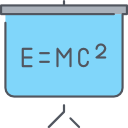 Ilmu-ilmu Terapan
Ilmu-ilmu Terapan  Kesenian, Hiburan, dan Olahraga
Kesenian, Hiburan, dan Olahraga  Kesusastraan
Kesusastraan  Geografi dan Sejarah
Geografi dan Sejarah